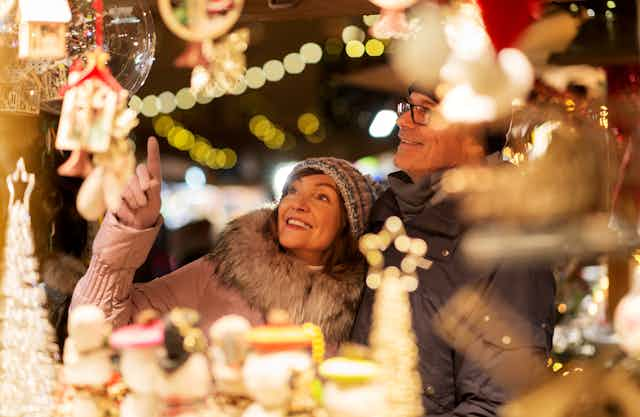Schools have only just gone back and, in many parts of the UK, warm temperatures are still on the forecast. Yet British retailers are already looking ahead to Christmas, previewing products and launching advent calendars and seasonal drinks.
Argos has already opened its online storefront for Christmas gifts. Waitrose beat other retailers, offering a preview of Christmas food (from the traditional mince pies to the new “cinnamon bunettone” and vegan offerings) since July.
As early as mid-August, Boots announced its collection of advent calendars (most of which are already in stock) and M&S announced that its Christmas food will be available from September (and a beauty advent calendar in October).
Liberty’s advent calendar will be available from September 27 but can be pre-ordered beforehand, Harrods launched its version on September 1, Molton Brown from September 19, and more are sure to come shortly. All three of these retail for £250.
Even if you’re not ready for panettone and pigs in blankets yet, shops certainly are. Being the first to announce a product gives retailers a competitive advantage, since consumers tend to prefer the first mover in the market. In other words, the earlier a shop launches its Christmas specials, the more likely it is to catch shoppers’ attention.
And after months of warm(ish) weather, consumers might be excited about the coming winter holidays. When Christmas products feel like a novelty, shoppers might be pushed to purchase something they did not intend to buy when going to the shop.
Earlier shopping also comes with benefits for consumers: avoiding the in-store rushes close to the holidays, and being able to plan gifts (and change those plans if something is out of stock). Concerns about crowds in shops and high streets are a source of shopping anxiety, particularly after the pandemic.
How much do we spend for Christmas shopping?
Of course, more days for Christmas shopping might increase average spending – more chances to spend money.
Statistics show that average UK Christmas sales reached a peak of £84.17 billion in 2021, decreasing slightly in 2022 likely due to cost of living concerns.
What we spend money on changes every Christmas, and is largely influenced by the trends of the year. In 2020 for example, British customers spent the highest amount on consumer electronics, and much less on clothing and footwear – readers will remember it was a Christmas of staying indoors and watching films or playing computer games, rather than going out in our finest.

Shop smart, seasonally
While some retailers have had Christmas on their minds since July, most will start to launch products in September. There is no need to rush – the full offer of themed products will be available later in the season. This will also allow you to compare products and seek out good bargains.
Even Christmas dinner can vary greatly from shop to shop. In 2022, all the ingredients cost an average of £22.30 at Aldi, up to £33.25 at Waitrose.
If you are feeling like it’s too early for Christmas, here are some tips that can help you prepare for the upcoming shopping season, and avoid overspending:
Set a budget, either for total Christmas shopping or for each month, and stick to it
Avoid impulsive purchases. With products already launched in August, there will be plenty of time to give also a second look to a product before buying. If you’re not sure about a purchase, it’s best to keep looking
Do your research. Check different shops and websites to find the best deals and similar products before you buy
If you’re searching through sales or discount bins, check the year on the product. Some decorations, especially for New Year’s, might still say “2022”. With some clever craftsmanship, buying last year’s decorations or products could be a good way to save money.
Consider buying secondhand or pre-loved items as gifts. Consumers find these gifts to be meaningful and the market is expanding. Handmade gifts are also appreciated by loved ones.
Enjoy! Remember that shopping, if associated with buying presents for others, usually brings consumers joy and happiness.

